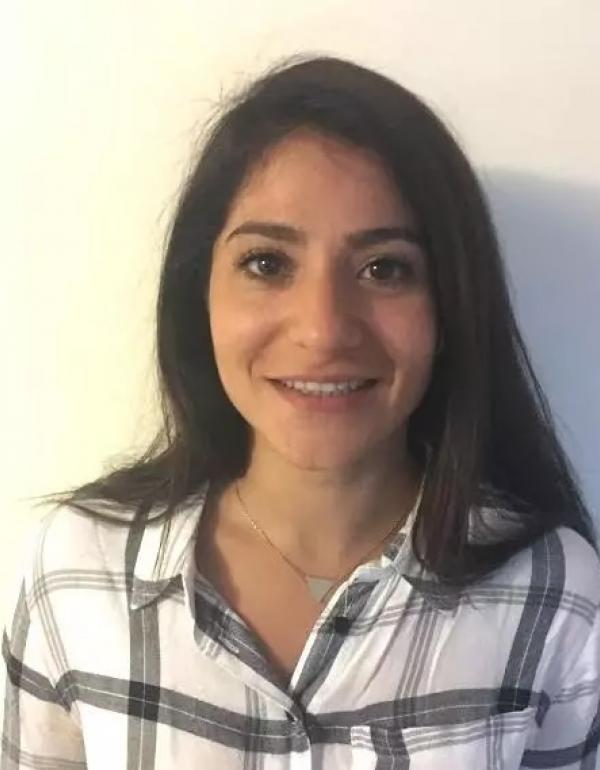
Sara Sepehri was born in Mons, Belgium, and graduated from the Université Catholique de Louvain (UCL) in Brussels with a Pharmacy degree. She made a significant shift towards the use of non-animal methods in safety testing due to her early research involving animal testing.After working as a pharmacist in Belgium and Iran, her growing interest in cosmetics and human health motivated her to complete a Master’s in Cosmetic Science at Liverpool John Moores University, where she discovered alternative methods to animal testing and the pioneering work of the In Vitro Toxicology and Dermato-Cosmetology (IVTD) group at the Vrije Universiteit Brussel (VUB). Under the supervision of Prof. Tamara Vanhaecke, Prof. Vera Rogiers, and in collaboration with Prof. Olga De Troyer and the WISE team, Sara completed her PhD at VUB titled “Innovative Approaches in Cosmetic Safety: Next-Generation Risk Assessment of Repeated Dose Liver Toxicity Without Animal Testing.” Her work led to the co-development of the TOXIN Knowledge Graph (TOXIN KG)—a semantic, ontology-based platform that structures regulatory safety data to support animal-free risk assessment and strengthen Next-Generation Risk Assessment (NGRA) strategies. Sara has presented her research to the Scientific Committee on Consumer Safety (SCCS), the German Federal Institute for Risk Assessment (BfR), and the Personal Care Products Council (PCPC), as well as at international conferences including ESTIV, EUROTOX, and the IC3Rs Symposium. Her research interests include animal-free risk assessment of cosmetics, knowledge graphs, data reuse, and uncovering hidden toxicological information to promote transparent, reproducible, and human-relevant safety evaluation frameworks.
The TOXIN knowledge graph: Supporting animal-free risk assessment of cosmetics
Sara Sepehri 1, Anja Heymans 1, Dinja De Win 1, Jan Maushagen 2, Audrey Sanctorum 2, Christophe Debruyne 3, Robim M Rodrigues 1, Joery De Kock 1, Vera Rogiers 1, Olga De Troyer 2, Tamara Vanhaecke 1
1 Department of In Vitro Toxicology and Dermato-Cosmetology (IVTD), Vrije Universiteit Brussel, Laarbeeklaan 103, Brussels 1090, Belgium.
2 WISE lab, Department of Computer Science, Vrije Universiteit Brussel, Pleinlaan 9, Brussels 1050, Belgium.
3 Montefiore Institute, University of Liège, Allée de la découverte 10, Liège 4000, Belgium.
The prohibition on animal testing for cosmetic ingredients in the European Union has sped up the changeover to assessing chemicals’ safety without animals. Although validated New Approach Methodologies (NAMs) exist for local toxicity, complex endpoints like repeated-dose systemic toxicity still lack complete replacement. Next-Generation Risk Assessment (NGRA) has therefore emerged as a human-relevant, exposure-led framework. However, its success heavily depends on the availability and quality of historical data. In silico, read-across, and other non-testing approaches rely on existing data, making the concept of “garbage in, garbage out” a critical challenge. One of the richest yet most underused sources of regulatory data is the Scientific Committee on Consumer Safety (SCCS). SCCS opinions describe toxicological results, mechanistic insights, uncertainty discussions, and regulatory decisions on cosmetic ingredients. Still, these documents are narrative PDFs with inconsistent formats across decades and committees, making them not machine-readable nor easily searchable, hindering data reusability. To address this, we developed the TOXIN Knowledge Graph (TOXIN KG), a semantic, ontology-based platform that transforms SCCS opinions into structured, interoperable, and queryable data in RDF. TOXIN KG combines an abundance of information including chemical identifiers (SMILES), reliability scoring (ToxRTool), biological ontologies, and OECD QSAR Toolbox predictions to allow the systematic and thorough exploration of the safety of cosmetic ingredients. Using TOXIN KG, we identified cosmetics associated with liver toxicity and transparently selected HC Yellow No. 13 for an NGRA case study. In parallel, the TOXIN Analyzer was developed to automate extraction of PDF content into machine-readable tables (CSV). TOXIN KG demonstrates that unlocking of previous regulatory data can facilitate the NAM-based hazard identification, the in silico modeling, and the NGRA confidence building. In the end, it leads to risk assessment that is reproducible, transparent, and totally animal-free.
